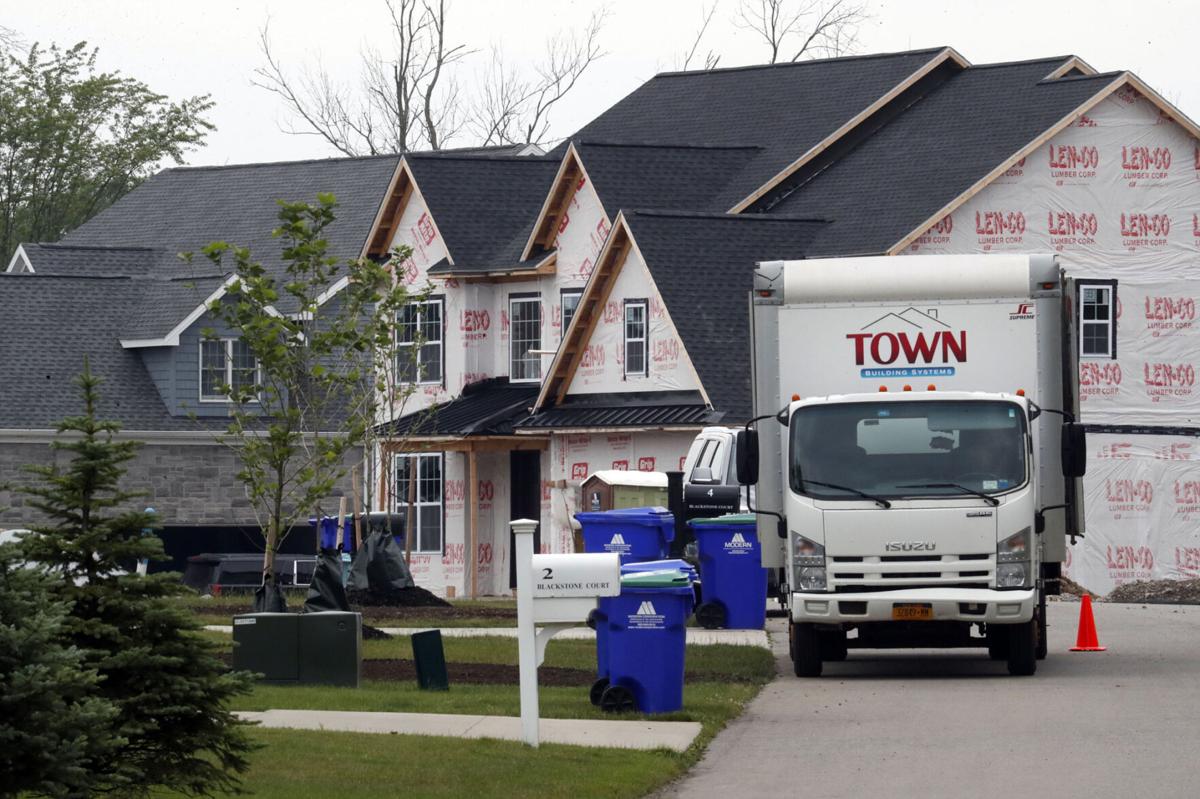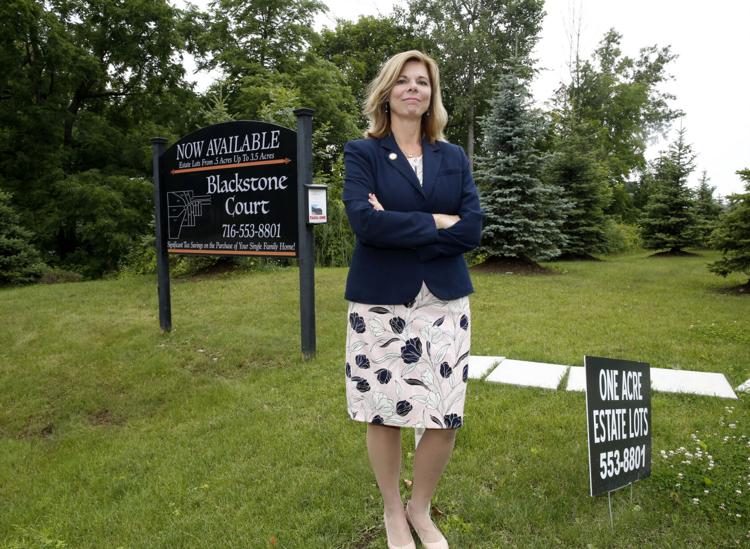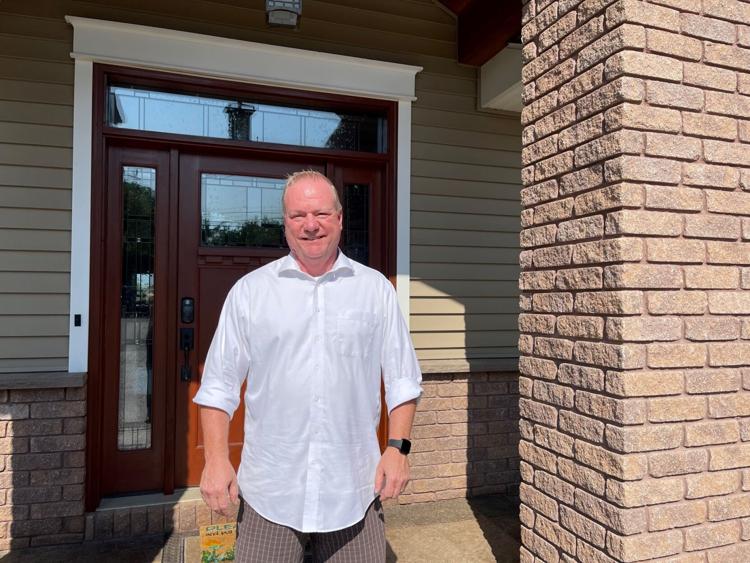Sean and Linda Walsh live in a ranch-style home along a bike trail and on the edge of Lorall Lake in Lancaster. Their assessment is $540,000, a figure that matches the home’s fair market value.
Just 4 miles away, a similar home has the same $540,000 market value but an assessed value of $328,000.
So, while the Walshes pay $14,112 in county, town and school district property taxes annually, the owners of the other home pay $8,422.
“That’s a big savings,” Sean Walsh said in an interview from his front step.
What’s the difference?
The town treats the Walshes’ home as a standard single-family residence for tax purposes while it classifies the other home, along with the rest of the properties on Blackstone Court in Lancaster, as a condominium.

They don’t look like a typical condominiums: side-by-side townhouses or units within a soaring tower. The free-standing residences look like any other spacious suburban home.
The homes can sell for hundreds of thousands of dollars – more than $1 million in some cases – but the owners reap financial benefits from their status as condominiums, a feature touted by real estate agents. Their assessed value can be a third lower than the home’s market value, meaning the owner enjoys a comparable reduction in property taxes that can save them thousands of dollars annually.
Builders say condominiums typically are constructed on smaller lots, along private roads, and require fewer town services. Further, their owners – often empty nesters who may otherwise leave town – pay homeowners’ association fees that cover the cost of work such as plowing snow or picking up garbage.
“The law is what it is,” said Patrick Marrano, president of Marrano Homes, which has developed a number of condominium projects in the region. “We’re not finding a loophole.”
Assessors and some lawmakers say lower assessments on condominiums shift the tax burden onto other property owners in the town, and when condo owners leave their private roads they use the same amenities as anyone else in the community.
Now, Assemblywoman Monica P. Wallace, D-Lancaster, has introduced new legislation in the latest effort to curb the condo tax break.

“The law allows them to do it, and they’re taking advantage of it,” said Wallace.
N.Y. City law used statewide
The condo statute, added to the state real property tax law five decades ago, was meant to protect the interests of those renting apartments in high-rise buildings in New York City if and when the building owners tried to convert the apartments to units for sale.
It treats condominiums as an apartment complex for tax purposes, with an assessment based on potential rental income and not market value, as in the case of a traditional, single-family home, officials said.
However, the law didn’t prohibit the application of the condo tax break outside New York City, nor did it limit the law to units within a multistory structure, and developers and property owners across the state adopted it.
Critics say applying condo status to a free-standing home goes against the law’s original intent, but efforts to make substantial changes to the law largely have failed.
“The assessors’ association has been fighting this for 50 years,” Clarence Assessor Albert Weber said.
In response to complaints, lawmakers updated the rule about 15 years ago to all but bar owners of existing single-family homes from banding together to convert their residences to condominium status.
In cases of new construction, the builder must file a document with local officials declaring a homeowners’ association and another with the state Attorney General’s Office agreeing to sell the units at a specific price, among other considerations.
The buyers agree to pay monthly association fees to cover the cost of services not provided by the town, such as road maintenance, trash pickup and utilities, and to hold in reserve.
A popular tax break
Builders argue homes classified as condominiums typically are on private roads, which the town doesn’t have to worry about maintaining, so lower property taxes are warranted.
The condos generally are on smaller lots, sometimes but not always in the form of townhouses with shared walls. Developers say they appeal to empty nesters, seniors and others who don’t want the full burden of home ownership and prefer someone else handle the upkeep, even if they have to pay hundreds of dollars a month in association fees.
Without the condo status, and the tax savings that come from it, those residents might leave the area, said Marrano, whose condo developments include the upscale Greythorne community near Williamsville.
“If you can provide this kind of housing to them, they’ll stay in your community, which I think is good for everybody,” he said.
The Buffalo Niagara Association of Realtors recorded 8,000 condo sales between 2010 and 2020 in the eight counties of Western New York.
“We definitely promote it as Realtors when we sell these properties,” Dan Locche, director of government affairs for the organization, said about the tax break. However, he said of condo buyers, “Ultimately you are paying for these services one way or another.”
There are about 135 condominium communities in Erie County, said Erik Finbar, West Seneca’s assessor and president of the Erie County Assessors Association.
In Amherst, there are roughly 5,000 condos among 35,000 owner-occupied homes in the town, said Assessor David Marrano, a cousin of Patrick Marrano. “Amherst is by far the highest concentration of these,” he said.
Clarence has 11 condominium subdivisions, with about 500 condo units in them, most on individual lots and boasting market values of $1 million or more.
The problem, as assessors see it, is once condo owners leave their privately maintained roads, they travel on the same public streets as anyone else, visit the same public parks and libraries and send their children to the same public schools as everyone else paying the full freight.
Condominiums can look like any other home but, when they’re assessed at a lower value, it shifts the tax burden onto all other property owners in the community.
“It’s just not fair to the other taxpayers,” Finbar said.
Noting the average assessment reduction for condos, Weber asked wryly, “Is 65% of the fire department going to come out and save 65% of your house?”
Costly single-family condos
Wallace, when introducing her legislation, highlighted a condominium development in Lancaster off Harris Hill Road just south of Ellicott Creek.
A sign at the entrance to the Blackstone Court subdivision offers “estate lots,” ranging from half an acre to 3½ acres, and touts, “Significant tax savings on the purchase of your single family home.”
Of the 12 lots, seven have finished homes, three have homes under construction and two are vacant. The builder, Brownstone Homes, did not return a message seeking comment.

The largest home on the road, where young pine trees line the entrance, 6,575 square feet with five bedrooms and 5½ bathrooms on nearly 5 acres, has a market value of $2 million, but an assessed value of $1.24 million, or 38% less. This lowers its tax bill by more than $19,000, Wallace reported, citing data from the Lancaster Assessor’s Office.
“That is very far from what the intent of the law was,” Wallace said.
Another Blackstone Court home, a 3,440-square-foot Colonial, sold in September 2018 for $540,000, but its assessment is 39% lower. Sean and Linda Walsh pay nearly $5,700 per year more in property taxes on their 3,500-square-foot ranch-style home on Pavement Road that has assessed and market values of $540,000.

Sean Walsh said he wasn’t aware of the condo tax break, nor was he aware Wallace had flagged his home in her presentation to reporters. He said he thinks of condominiums in their traditional sense, sharing walls in a large building.
Applying the statute to free-standing homes, like those on Blackstone Court, he said, “That seems like you’re cheating the system a bit.”
Compromising on a change
Some assessors say the builders simply are following the law as it’s written.
“I don’t in any way, shape or form blame the developers,” said David Marrano, Amherst’s assessor.
He said he believes the state Attorney General’s Office needs to do a better job of bringing the local assessors and shareholders into the approval process, but the office, in a statement, said it does not determine whether a condominium is created.
Others are more critical, with Wallace saying developers are “exploiting” a loophole. She said she heard enough concern from assessors that she decided to search for a way to change the condo tax law. She’s not the first to try, with Assemblywoman Sandy Galef, D-Ossining, regularly introducing legislation that hasn’t won final approval.
Wallace, in an attempt to gain more support for her bill, agreed to apply the changes only to new construction and only to homes outside New York City.
She said her focus is on free-standing, single-family homes on typical suburban-sized lots – not patio homes in dense developments. She’s met with builders and other interested parties and believes there is room to find common ground.
“There is absolutely a way to do it,” agreed BNAR’s Locche.
Published by The Buffalo News





